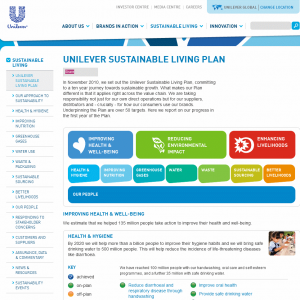 This is the second and final part of a post based upon an article from the Network for Business Sustainability. The article addressed seven aspects of business companies need to demonstrate that they have addresses. Part 1 can be read here.
This is the second and final part of a post based upon an article from the Network for Business Sustainability. The article addressed seven aspects of business companies need to demonstrate that they have addresses. Part 1 can be read here.
Worker protection
Occupational health and safety standards must be considered non-negotiable
Like adhering to the law of the land you would imagine that occupational health and safety went without saying. The sad truth is that many businesses sail close to the wind on health and safety so inevitably there are some breaches of the rules, a fair proportion of which could be deemed to be deliberate.
One of the best “this is how we protect our workers” statements I’ve ever come across is on JB Brown Construction’s CSR webpage. This is just a single page embracing everything the company does but it shows more engagement on worker safety than many others I’ve read.
Newsletters and informal briefings: check. Regular satisfaction questionnaires, check. Regular board level reports: check. Ultimately they “want to ensure that all our employees return home fit and well every day”. That is a pinnacle for every company to aspire to, why don’t others say it as well?
Environment
Environmental actions—reduced pollution, safe waste disposal, energy and land efficiency, smaller carbon footprints, ethical sourcing—are no longer a matter of choice but necessity. Companies must respect common resources. The Indian saying is: “Jal, Jungle, Zameen”—or, “water, land, and forests.”
The environment is the go-to touchstone of the CSR movement and there is no CSR website which doesn’t touch upon the environment as a matter of course. This makes finding an exemplary website very difficult indeed.
Instead, I’d like to encourage businesses to develop greater depth to their existing websites. Discuss the pollution your business is responsible for, directly or indirectly. What about your waste or energy? Do you consider any of the resources you consume to be common resources?
There’s a lot here which can be mined for a company which is already sustainably literate. For businesses which aren’t there’s a good few headlines you can start to organise your activities under.
Communication
Greenwashing and misleading public relations simply don’t work, as Internet and the media ensure that scrutiny is fast and furious
Marketing is still a long way from being responsible or sustainable and many businesses, often in spite of their best intentions, allow their communication strategies to be dominated by spin rather than transparency.
A correspondent of mine recently opined that
.. the biggest weakness (of CSR) is that it is still very closely linked with PR and marketing … the materiality concept is often ignored in favour of more buzz-worthy elements. Because of this, people don’t really find the information in the report as credible and see it as just a more detailed, fancy and colourful form of a press release .. The only people who actually read a report from cover to cover are practitioners, students or competitors. In such a situation, it is hard for a company to see the value of a report and that is precisely why I believe that positioning a report like a PR activity is often counter-productive.
The easiest way of demonstrating the size of this gap is to point at the yawning gulf directly. In the Netherlands KPN (a telecommunications company) and DSM (a life sciences company) have both won the Dutch Government’s prestigious De Kristal award for the most transparent Sustainability Report of the year; in the UK The Co-operative has been lauded for producing a “warts and all” sustainability report which shows both where it succeeded and where it failed.
Yet none of these trailblazing companies, or any other that I know of, has seen fit to publish how such remarkable shift in communication strategy has come about and is implemented on a day by day basis. Even if it’s as simple as publishing embarrassing figures alongside praiseworthy ones there has to have been a massive shift in corporate culture. How was this implemented .. that’s what the world would like to know!
Commitment
Companies must see the long-term business case in ethical conduct and responsible business practices

Unilever Sustainable Living Plan
Seeing the long term business case is still a very fraught area. For example, last month an AfU/RepRisk report said that incorporating ESG into investment strategies didn’t ensure portfolios performed any better than conventional ones. Conversely, an article from Harvard Business Review demonstrated that sustainable companies were outperforming the market average.
Both of these reports miss the point .. or rather two points .. of sustainability. These are that sustainability is a long term financial strategy which cannot really be compared to the short term-ism of the past decades, and that it’s also a survival strategy designed to reverse the damage the worst excesses of that short term-ism did to the environment, finite resources and humanity.
But how can a business demonstrate it understands this, especially when the financial reporting cycle is annual and the political cycle 4-5 years? This makes long term planning especially difficult and often as not it comes across as either limp wristed or a marketing ploy.
The answer is in the NSB article: by showing commitment and having the courage to plan for that long term. Investors may not like it in the short term, and while there is always regulatory uncertainty it’s highly unlikely that sustainability measures are going to be outlawed.
One of the most committed websites I’ve come across is Unilever’s Sustainable Living Plan. Like many CSR plans it is long term (10 years) and includes the usual plethora of emissions, waste and water targets. However while many manufacturers may choose to navel-gaze Unilever’s targets look to the broader horizon.
For example: “Halve the water associated with the consumer use of our products by 2020″ (my emphasis) as a headline 2020 target, or eight separate targets for GHG emissions ranging from consumer use through manufacturing to the storage of their products in the retail sector. There’s even a cheer for transparency with the company saying of their current progress against one of the targets “We are finding this target challenging and our progress is modest”.
Conclusion
CSR and sustainability have come a long way in the five years I’ve been writing about them, as can be attested by how the number of consultants and corporate strategies has exploded. However it would be foolish to think it is yet a mainstream activity with many businesses still viewing it as an add on, a tiresome regulatory requirement or the latest marketing gimmick.
The best way to ensure that your business is not classed as one of these businesses is to show your sincerity on your website, and I hope these two articles have given you food for thought as to how that can be achieved.
Picture Credit: 7 by Neal Jennings under CC Attribution Share Alike License.
Lucy is Editor at Corporate Eye



Hello Chris, Thanks for responding to my article in such a detailed & interesting way.I appreciate your piece. I have a lot of criticisms about the unilever sustainable Plan & if you google Civil Society magazine india online & type Unilever & my name you will find the arguments. If you do not find it I can mail it to you. best, Amita